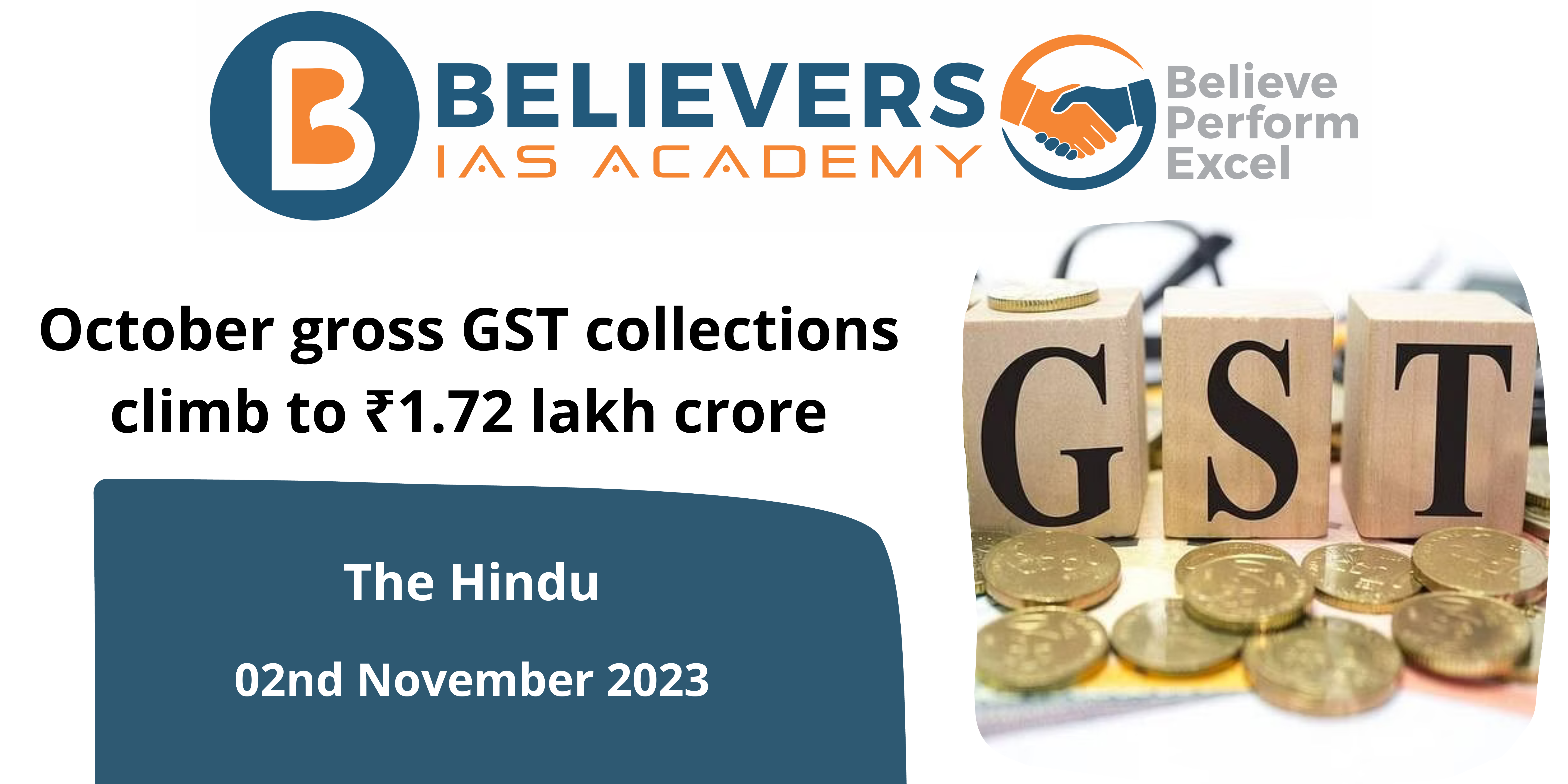October gross GST collections climb to ₹1.72 lakh crore
Context
In October, India’s gross Goods and Services Tax (GST) receipts increased at a 10-month high rate of 13.4%, reaching the second-highest monthly tally of 1.72 lakh crore.
What is the background behind the GST?
- The Goods and Services Tax (GST) is the successor of the Value Added Tax (VAT) on the delivery of goods and services in India. GST is a digitalized version of VAT that allows you to track products and services.
- The tax slabs for VAT and GST are the same. It is a comprehensive, multistage, destination-based tax: comprehensive because, except for a few state levies, it has absorbed practically all indirect taxes.
- The GST is imposed at every stage of the production process, but it is intended to be refunded to all parties in the various stages of production other than the final consumer, and as a destination-based tax, it is collected from the point of consumption rather than the point of origin, as previous taxes were.
What is the performance of the GST collection for October 2023?
- GST Revenues in October 2023: India’s Goods and Services Tax (GST) revenues increased significantly in October 2023, reaching a 10-month high of 13.4%. The overall collection for the month was 1.72 lakh crore, the second-highest monthly amount in history.
- Comparison to September: In comparison to September, GST receipts in October were 5.7% higher in October. In September, indirect tax growth had slowed dramatically to a 27-month low of 10.2%.
- Year-on-Year Growth: The 13.4% increase in GST income in October was the largest year-on-year increase since December 2022. This increase ended a three-month streak of revenue decline.
- Revenue Sources: Domestic transactions and service imports both contributed to a 13% increase in GST receipts in October. Importantly, the growth in GST taxes on goods imports was even greater in October, at 13.9%, the fastest in at least nine months.
What are the GST Compensation Cess Collections for the year 2023?
- GST Compensation Cess Collections: In October, the GST Compensation Cess collections, which comprise levies on goods imports, reached a new high of 12,456 crore. This was the most significant collection because it will last until at least March 2026. In April, the previous highest collection was 12,025 crore.
What are the contributions of the state to GST Revenue?
State GST revenue increases for the first seven months of fiscal year 2023-24. During this period, state GST collections increased by 12%, with just two states showing negative growth: Manipur (-19%) and Himachal Pradesh (-2%).
What are the viewpoints of the experts on this progress?
- Experts shed light on the causes behind the increased GST collection in October. They proposed that this increase could be linked to a variety of variables, including:
- For the fiscal year 2017-18, compliance deadlines and the consequence of a time-barring period.
- A flurry of warnings and anti-evasion tactics led to significant collections.
- Settlement of 2017-18 issues, as the customary statute of limitations expired on September 30.
- Higher collections are also likely due to the ongoing holiday season, which has bolstered consumption and economic activity.
Conclusion
In summary, the paper outlines a significant resurgence in India’s GST revenues in October 2023, driven by a variety of contributing factors such as increased compliance efforts and a boost from the festive season. The collection also increased sharply year on year, breaking a recent trend of GST income declines.




